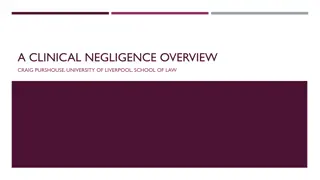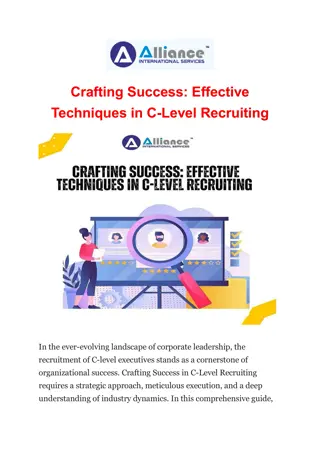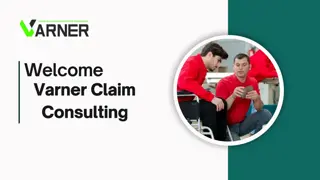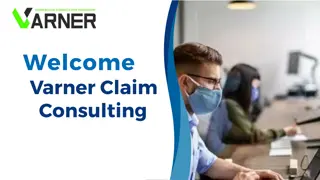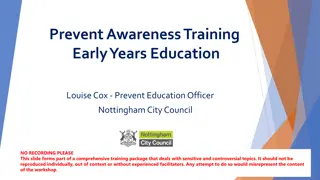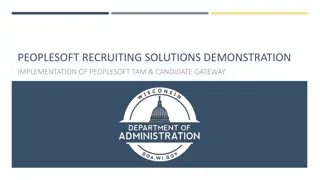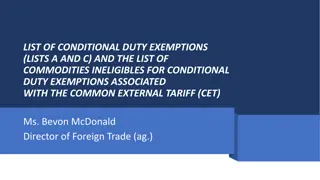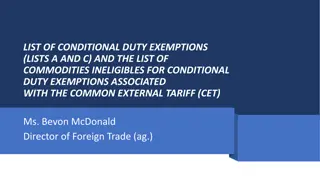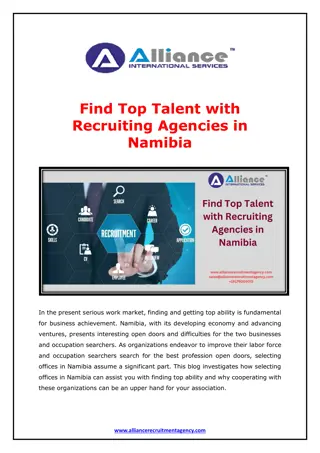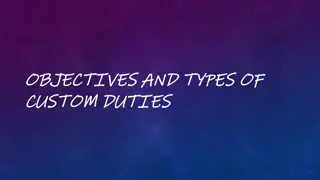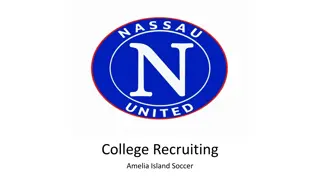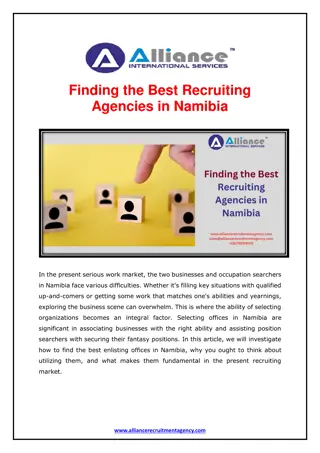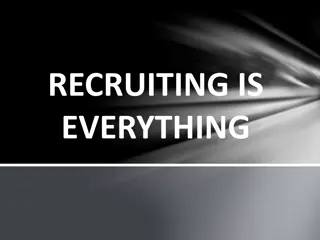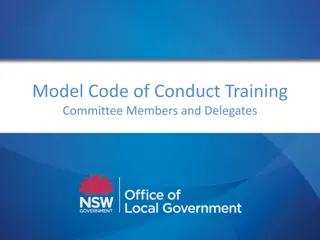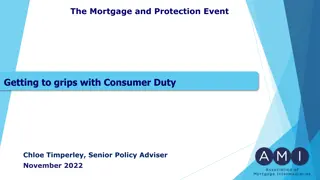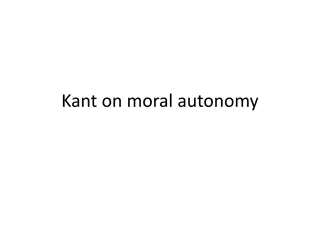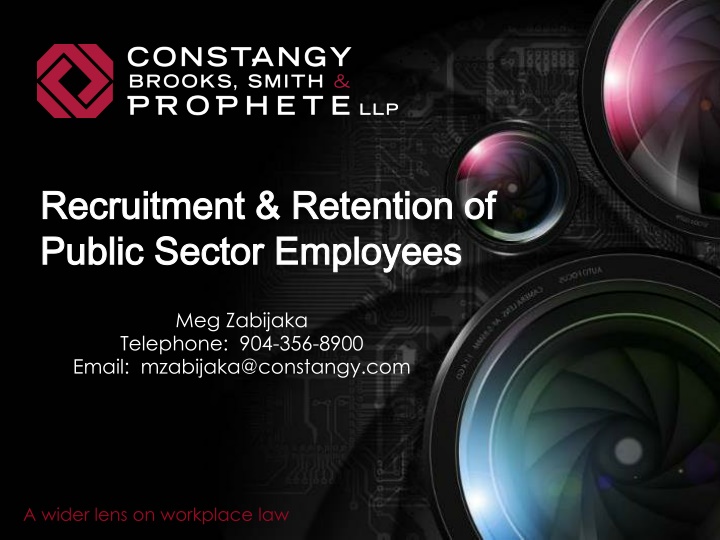
Workplace Recruitment and Retention Strategies for Public Sector Employees
Explore effective recruitment and retention strategies for public sector employees, including the impact of the Great Resignation, importance of good hiring practices, legal risks, job descriptions, and job vacancy advertisements. Stay informed to attract and retain top talent in the public sector.
Download Presentation

Please find below an Image/Link to download the presentation.
The content on the website is provided AS IS for your information and personal use only. It may not be sold, licensed, or shared on other websites without obtaining consent from the author. If you encounter any issues during the download, it is possible that the publisher has removed the file from their server.
You are allowed to download the files provided on this website for personal or commercial use, subject to the condition that they are used lawfully. All files are the property of their respective owners.
The content on the website is provided AS IS for your information and personal use only. It may not be sold, licensed, or shared on other websites without obtaining consent from the author.
E N D
Presentation Transcript
Recruitment & Retention of Recruitment & Retention of Public Sector Employees Public Sector Employees Meg Zabijaka Telephone: 904-356-8900 Email: mzabijaka@constangy.com A wider lens on workplace law
Job Environment The Great Resignation ~47 million people quit in 2022 80% report regretting the decision 70% reported trying to get their jobs back Freelance Work 60-70 million freelancers in the U.S. as of 2022 39% of the U.S. workforce A wider lens on workplace law
Recruitment/Hiring A wider lens on workplace law
Importance of Good Hiring Practices Costs time and money Unqualified employees Civil liability Harassment and discrimination Theft or property damage Diminished morale Employee retention The best and only opportunity to preview an applicant A wider lens on workplace law
Legal Risks Associated with Improper Hiring Practices Disparate impact discrimination suits, based on selection rates for who gets interviewed and who gets hired Disparate treatment discrimination suits, when an unsuccessful applicant asserts greater qualifications than the one hired Negligent hiring claims Negligent or fraudulent misrepresentation claims Veterans Preference Violations Civil Rights Violations (i.e., drug testing) Fair Credit Reporting Act concerns A wider lens on workplace law
Preparing Position Descriptions Create or update the job description for the open position Include: All essential functions Physical and mental requirements Environmental conditions Minimum education, skills, experience, certifications, or licenses required (and future requirements) Secondary or marginal functions Statement that the description is not exhaustive and that other duties and functions may be assigned, and that the employer has the right to add/remove them at any time A wider lens on workplace law
Job Vacancy Advertisements Consistent with the job description List the essential functions and the required skills, experience, and competencies Accurately describe the position, including the duties expected of the position Lists the minimum qualifications Statement that employer is an EOE and a drug- free workplace Whether Veterans Preference applies A wider lens on workplace law
Uniformity in the Process Same standards for considering applicants Consistency in response to misrepresentations on application Key: Will the process be perceived as fair? Also required to have a written veterans recruitment plan A wider lens on workplace law
Minimum Qualifications Revisions to Section 112.219, Fla. Stat. Allowing work experience in place of post- secondary degree Years of experience to be allowed in lieu of a degree Effective July 1, 2023 A wider lens on workplace law
Pre-screening Screen initial applicants based on skills, experience, and competencies reflected on applications/resumes Do not review applicant s social media Identify who is claiming Veterans Preference A wider lens on workplace law
Veterans Preference Legislative Intent It is the intent of the Legislature to provide preference and priority in the hiring practices of this state as set forth in this chapter. All written job announcements and audio and video advertisements used by employing agencies of the state and its political subdivisions must include a notice stating that certain service members and veterans, and the spouses and family members of the service members and veterans, receive preference and priority in employment by the state AND are encouraged to apply for the positions being filled. A wider lens on workplace law
Who is a veteran? A person who served in the active military, naval or air service AND Was discharged or released under honorable conditions OR later received an upgraded discharge under honorable conditions. A wider lens on workplace law
Who qualifies for Veterans Preference? (a) 1. Armed Forces, have received an honorable discharge, and have established the present existence of a service-connected disability that is compensable under public laws administered by the United States Department of Veterans Affairs; or 2. Who are receiving compensation, disability retirement benefits, or pension by reason of public laws administered by the United States Department of Veterans Affairs and the United States Department of Defense; (b) The spouse of a person who has a total disability, permanent in nature, resulting from a service-connected disability and who, because of this disability, cannot qualify for employment, and the spouse of a person missing in action, captured in line of duty by a hostile force, or forcibly detained or interned in line of duty by a foreign government or power. (c) A wartime veteran as defined in s. 1.01(14), who has served at least 1 day during a wartime period. Active duty for training may not be allowed for eligibility under this paragraph. (d) The unremarried widow or widower of a veteran who died of a service- connected disability; Those disabled veterans: Who have served on active duty in any branch of the United States A wider lens on workplace law
Who qualifies for Veterans Preference? (Continued) (e) widow or widower of a member of the United States Armed Forces who died in the line of duty under combat-related conditions, as verified by the United States Department of Defense. (f) A veteran as defined in s. 1.01(14). Active duty for training may not be allowed for eligibility under this paragraph. (g) A current member of any reserve component of the United States Armed Forces or the Florida National Guard. The mother, father, legal guardian, or unremarried A wider lens on workplace law
Why does this matter? Complaint can be filed with Department of Veterans Affairs Can be required to place preference eligible applicant who is not selected in position he/she applied for E.g., City of Apopka, September, 2018 firefighter applicant was interviewed and participated in screening test, but a less qualified non-veteran applicant was offered the position based on community ties. City admitted to having little knowledge of Veterans Preference requirements. City was ordered to offer position to complainant and pay back wages. A wider lens on workplace law
Exempt from Veterans Preference Positions that are exempt from the state Career Service System under s. 110.205(2); Positions in political subdivisions which are filled by officers elected by popular vote or persons appointed to fill vacancies in such offices; members of boards and commissions; persons employed on a temporary basis without benefits; and positions that require that the employee be a member of The Florida Bar. A wider lens on workplace law
Veterans Preference in Hiring Required language in written announcements and audio and video advertisements of employment opportunities subject to preference that preference in appointment will be given to preference-eligible applicants Employer must inform preference-eligible applicants at the time of application of the right to an investigation by the Department of Veterans Affairs if a non-preference eligible applicant is appointed to a position, the time limits for requesting such investigation, and the address to which the request for an investigation should be sent Application forms must ask whether the applicant is claiming Veterans Preference and shall state that required documentation must accompany the application or be submitted prior the application date and time The employer has an affirmative duty to notify an applicant if a timely submitted Veterans Preference claim is found to be missing information. The employer must advise the applicant and provide a reasonable amount of time for the applicant to cure the deficiency. A wider lens on workplace law
Veterans Preference in Appointment Numerical Based Selection Process If examination is used, then you must ADD points (20, 15, or 10), depending on their status if they obtained a qualifying score Two ways to augment scores: (1) applicant must pass the first test in order to proceed to the next test augment at each step/test; or, (2) applicant takes a series of tests and all of the scores are added up to reach a single cumulative score. If applicant scores a passing score, the final test score is augmented. A wider lens on workplace law 18
Veterans Preference in Appointment Non-numerical Selection Disabled veterans receive first preference in appointment, employment, and retention Second preference to other veterans Must possess the minimum qualifications necessary to discharge the duties of the position involved Preference-eligible applicants must be given special consideration and priority at each step of the selection process A wider lens on workplace law 19
Veterans Preference in Appointment Non-numerical Selection (Cont d) Preference-eligible applicants who meet the minimum qualifications shall be considered for selection and shall be granted an interview in all cases At each stage of the process, if a preference- eligible meets minimum qualifications, he or she will advance to the next step in the selection process If, at any step, a determination is made that the preference-eligible applicant is not qualified to advance to a subsequent step in the process, there must be a review process A wider lens on workplace law 20
Documentation of Selection Process Maintain records that document the manner of selection and the propriety of the selection process and decision If a preference-eligible applicant is not selected, the employer shall notify the applicant within 14 business days of the hiring decision, which timeclock starts to run when the employer secures a commitment from the selected applicant for a date certain to start work. A wider lens on workplace law 21
Conditional Offer: Criminal, credit, and/or DMV checks Fingerprinting Contact references and prior employers; remember the FCRA! May reveal misrepresentation Pre-Employment Drug Testing 768.096, Florida Statutes (presumption) A wider lens on workplace law
Pre-Employment Drug Testing Pre-employment and random testing should be limited to safety-sensitive positions or those for whom there is a special need to test (also referred to as mandatory- testing positions and special-risk positions). 4th Amendment Violation to test without reasonable suspicion Safety-sensitive position means any position, including a supervisory or management position, in which a drug impairment would constitute an immediate and direct threat to public health or safety. A wider lens on workplace law
Drug Testing (Cont) "Safety-sensitive position" means, with respect to a public employer, a position in which a drug impairment constitutes an immediate and direct threat to public health or safety, such as a position that requires the employee to carry a firearm, perform life- threatening procedures, work with heavy or dangerous machinery work with confidential information or documents pertaining to criminal investigations, or work with controlled substances; a position subject to s. 110.1127; or a position in which a momentary lapse in attention could result in injury or death to another person. (440.102(o) F.S.) A wider lens on workplace law
Drug Testing (Cont) S. 110.1127 Positions requiring security background checks, including fingerprinting, as a condition of employment; All positions in programs providing care to children, the developmentally disabled, or vulnerable adults for 15 hours or more per week; All positions of the central abuse hotline. A wider lens on workplace law
Retention/Managing Off Duty Conduct A wider lens on workplace law
In general, what an employee does on his/her own time and outside the workplace is the employee s business Employment is at-will (unless Contract or CBA) BUT . . . There are exceptions to this principle which arise when off-duty conduct has a connection to the employee s position and/or the employer s operations And when there are legal protections put in place A wider lens on workplace law
Legitimate Employer Concerns The employee s involvement in certain types of off- duty conduct can raise employment concerns and may constitute legitimate grounds for discipline or termination Examples: Protecting employer s reputation Disruption in the workplace Impact on the employer s operation/mission Liability risk exposure A wider lens on workplace law
Assessing the Conduct . . . Is there a real/material connection between the conduct and the workplace? Nature of employee s duties Employer s expectations for employee s conduct Nature and seriousness of employee s conduct Impact of employee s conduct on employer s operation/mission and reputation Impact on fellow employees A wider lens on workplace law
Arrests and Criminal Conduct First Question Are they accused, or have they been convicted? Second Question What are the underlying facts? EEOC s Position on Arrests Possible Disparate Treatment/Disparate Impact Claims Individualized assessment (offense, job, business necessity) Consistent application of policies What are the underlying facts? Balancing Act Potential claims under Title VII vs. Negligent Hiring/Retention Claims under State Law Job related and consistent with business necessity A wider lens on workplace law
EEOCs Position EEOC s Position on Convictions Conviction will usually serve as sufficient evidence of criminal conduct. Provided that 1) it is job related and 2)consistent with business necessity. Fact Inquiry how long ago, what was the conviction for, etc. A wider lens on workplace law
When Can You Discipline for Otherwise Lawful Activity? Generally, when the conduct 1) reflects poorly on the employer, 2) detrimental to the employer s reputation, 3) is disruptive, 4) Negatively impacts the operation or mission of the employer OR 5) exposes the employer to liability. But remember Constitutional Implications A wider lens on workplace law 32
Drug Testing BEFORE YOU DISCIPLINE OR DISCHARGE OVER A DRUG TEST, REMEMBER: No suspicionless testing unless it s a safety-sensitive or special need position This is true for post-accident testing, too Reasonable suspicion testing needs to be conducted close in time to the circumstances giving rise to the reasonable suspicion A wider lens on workplace law
Marijuana Use Varies state by state (even recreational use) ADA and medical marijuana Currently, in Florida, use of medical marijuana is not protected activity Remote employees or employees who have traveled to a legal state? A wider lens on workplace law
Public Expression Apply a balancing test to weigh the employer s interest in providing efficient public service against the employee s interest in making the speech/expression Questions: 1. Is their speech or expression a matter of public concern or a private issue? 2. Is there a real/material connection between the conduct and the workplace? 3. Is the speech a substantial reason for the discipline or discharge? 3. Would the same decision have been made in the absence of protected conduct? A wider lens on workplace law
Purely Personal Communication A nurse of a public hospital is pulled over and issued a speeding ticket. She tells the officer she hopes to never have him as a patient. The hospital fires her. Does she have a First Amendment claim? No. The speech reflects a purely personal dispute, not a matter of public concern. Leverington v. City of Colorado Springs A wider lens on workplace law
Detrimental to the Employers Reputation Deputy sheriffs engaged in consensual sexual activity that was recorded and made available to paying customers online. Their faces were shown, but all activity was lawful. They were terminated after the County learned about the online videos from an anonymous complaint. Do they have a First Amendment claim? No. The expression was not a matter of public concern and was detrimental to the reputation of the Sheriff s Office. Thaeter v. Palm Beach County Sheriff s Office A wider lens on workplace law
Speech is of Public Importance Director of Solid Waste Dept. appeared at board meeting. During public comment period, he criticized the decision to increase the solid waste disposal fee and to privatize waste collection. He stated, in part, that the decisions would harm the community and senior citizens. He also called the commissioner a liar and a big liar. He was terminated. Was his speech protected by the First Amendment? Yes. The main thrust of his speech was of public importance. Brown v. Greene County Com n. A wider lens on workplace law
Social Media An Assistant Finance Director at a local county government was terminated for his Facebook posting about a new state attorney s decision to not seek the death penalty. He posted that she should be tarred and feathered if not hung from a tree and that she should get the death penalty. Was his speech protected by the First Amendment? No, his speech clearly interfered with the operation of the office and damaged the credibility of the department. Although the posts were on a matter of public concern, the employer s interest in carrying out its functions outweighed the employee s interest in the speech. A wider lens on workplace law
Moonlighting When employees work multiple jobs OR Run a personal business in addition to their primary job Gig Economy Independent workers paid to perform discrete tasks or services ( gigs ) for businesses Multiple income streams in addition to primary employment Digital platforms directly connect the gig workers to the consumer A wider lens on workplace law
When can you discipline? Default: At-will employees may work for another employer during non- work hours No federal law regulating what employers can and cannot do about moonlighting Do you have a policy prohibiting moonlighting or addressing conflicts of interests? Is there a contract provision in a CBA addressing moonlighting? If not, then all the previously discussed principles apply KEY: Is there a real and material connection between the conduct and the workplace? A wider lens on workplace law 41
Cybulski v. Cooper (1995) Moonlighting privileges revoked from police officer after he hindered an investigation at his second job. Held: No due process violation because as a temporary and conditional source of supplemental income, plaintiff has no absolute right, nor assured right, to the moonlighting. A wider lens on workplace law
Questions Meg Zabijaka Telephone: 904-356-8900 Email: mzabijaka@constangy.com A wider lens on workplace law 43

